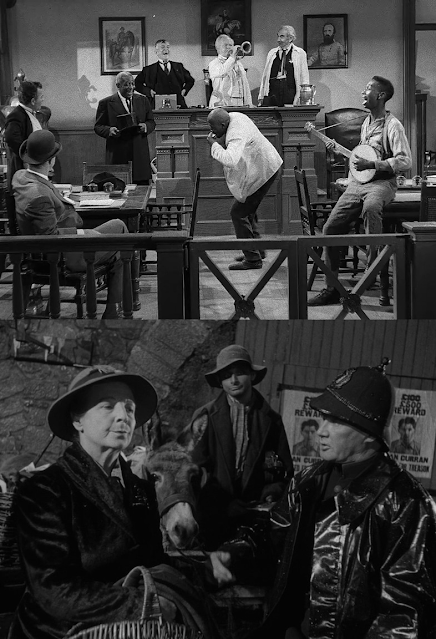The Contradictory Humanism of John Ford: The Sun Shines Bright (1953) & The Rising of the Moon (1957)
In recent years, John Ford's stature among cinephiles has declined, as politically correct discourse has become dominant in the community. Ford was decimated in the 2022 Sight & Sound poll, leaving him with only one film in the Top 100. Ford has been decried by his detractors as a racist and a reactionary, and the aesthetic merits of his films have been neglected in favor of polemics. I think John Ford is one of the most quintessentially American directors, and see his films as representing the fundamental contradictions of the American psyche. On one hand, they are profoundly humanistic, and celebrate some of the best aspects of American society; Ford himself was a staunch supporter of FDR, and a New Deal liberal. But on the other hand, they are full of racist tropes, especially regarding African-Americans and Native Americans, even in films where Ford tries to inject some nuance, like Fort Apache (1948).
The Sun Shines Bright was Ford's own favorite of his films, and I consider it to be the most racist film I have ever seen. While it is ostensibly an anti-lynching film, it also glorifies the "lost cause" of the Confederacy, and portrays its black characters as simple and childlike, in need of a white father figure. That father figure comes in the form of Judge Priest, a whiskey drinking court judge, who is facing a serious challenge from a "progressive" rival. Judge Priest tries to be fair, but he is still in a superior position over the town's black population. Some reviewers have engaged in historical revisionism, saying the white society in The Sun Shines Bright is militarized and violent compared to the relaxed soulfulness of the blacks. The Stepin Fetchit character has also been retconned by some scholars as embodying the trickster archetype, getting whites to do labor for him instead of doing it himself. But like a lot of these critiques, they don't hold up. What makes The Sun Shines Bright so egregious is that it was made right at the beginning of the civil rights movement. Brown would be decided a year after its release, and the National Guard sent in to integrate schools. It feels like a relic from another era, even for the 1950s. This is the primary contradiction of Ford's humanism; he can portray lynching as wrong, but he can't portray the black characters as anything other than stereotypes.
In contrast to The Sun Shines Bright is Ford's later masterpiece The Rising of the Moon, a triptych of three short segments based on classics of Irish literature. The last segment, 1921, is about an Irish revolutionary who escapes execution, and goes on the run during the Irish War of Independence. One of the characters is an Irish policeman working for the British who has to choose between his conscience and his duty. This is the most explicitly revolutionary work Ford has ever made, and here he portrays all his characters as fully human, and the film shows a clear, deep humanist instinct. But it also shows again the limitations of Ford's humanism. The Irish are his people; he is one of them, and shares a deep faith in their struggle for liberation. Under British occupation, the Irish were treated as blacks were in the deep south, but Ford was unable to make this connection.
Ford's lack of real empathy for his non-white characters is a blight on his work, and does mar what are some of the most technically and thematically brilliant films of the Hollywood Golden Age, but rather than engaging in polemics denouncing and "canceling" Ford, we need to be able to look at his work with a critical eye, and use nuance to see where it succeeds, and where it fails. Perceptions of art are always evolving, and in the case of Ford's work, there is a real danger that his contributions will be tossed into the same rubbish bin as his prejudices.


Comments
Post a Comment